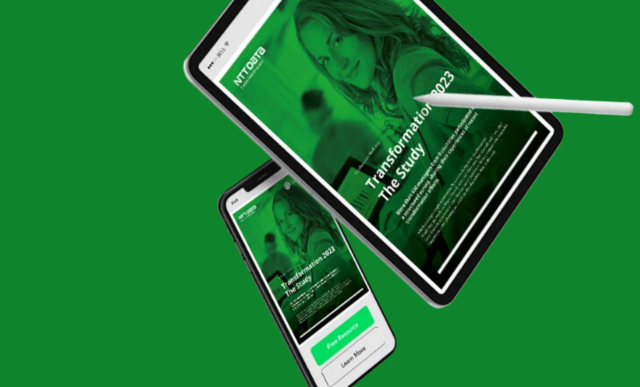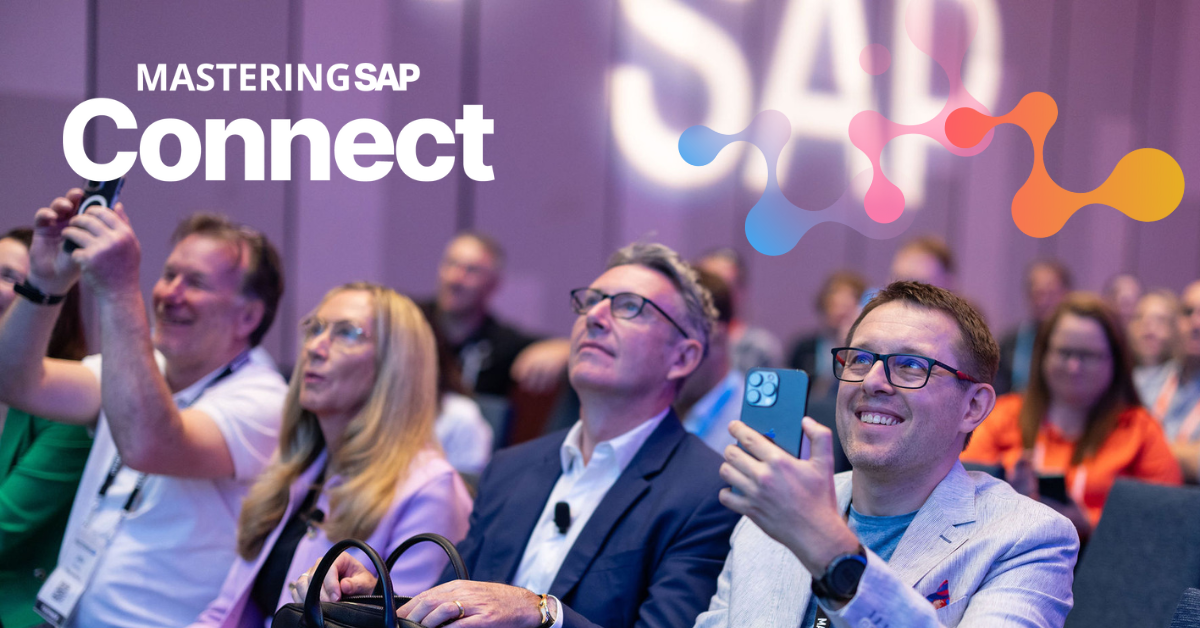How SAP S/4HANA Adoption Is Changing and Why the Future of the Digital Core Is More Exciting Than Ever
 Dr. Tom Janoshalmi, SVP, Global Head of SAP Digital Core MOVE
Dr. Tom Janoshalmi, SVP, Global Head of SAP Digital Core MOVE
Since SAP S/4HANA was first released in 2015, it has been front of mind for users of existing SAP ERP systems. Whether organizations were formulating their transition plans or testing the waters to determine SAP’s level of commitment to the solution, figuring out how to approach the transition has been central to ERP planning for the last five years. And while SAP has stretched mainstream maintenance of older ERP systems to 2027 (2030 for extended maintenance), providing organizations with a little bit more time for the transition, all SAP customers must walk the path to SAP S/4HANA at some point. As companies continue to consider when to make this move, the big change in 2020 has been in the reasons to go forward with it now, versus waiting until it is absolutely necessary.
In August 2019, SAPinsider research showed that 44% of survey respondents who were building the business case for SAP S/4HANA were being driven by the end of maintenance for SAP ECC. While this date was still a factor when SAPinsider updated the research in June 2020, the percentage of respondents citing the end-of-maintenance date as the driver for their SAP S/4HANA business case had dropped to 29%. Over the same period, a business focus on digital transformation increased slightly from 52% in 2019 to 53% in 2020, and concern over the increasing cost of maintaining highly customized environments and older technology increased from 29% to 31%. However, the change in the percentage of respondents reporting the end-of-maintenance date as driving the move to SAP S/4HANA and those citing the solution’s potential benefits as the main driver is significant.
Similar to the shift in the drivers around SAP S/4HANA adoption, respondents’ reactions to those drivers also changed between the 2019 and 2020 surveys. In 2019, 37% of organizations building the business case for SAP S/4HANA identified defining and understanding the overall costs of moving to SAP S/4HANA as their top strategy. This number increased in 2020 to 48%, but cost was no longer named as the top strategy. Instead, 61% of those building a business case prioritized understanding how SAP S/4HANA will affect specific business processes and key performance indicators (KPIs). This again shows a shift toward a more business-oriented approach to SAP S/4HANA adoption.
Explore related questions
The SAPinsider research report published in April 2020, SAP S/4HANA Finance: State of the Market, revealed a similar focus on moving to SAP S/4HANA for functionality rather than maintenance reasons. Survey respondents cited the improved functionality within SAP S/4HANA Finance as the top driver for upgrading their current ERP system. This was followed by the need to reduce the time required to complete the financial close, which directly connects to the new functionality in SAP S/4HANA Finance that supports this task.
Over the same time period, SAPinsider identified a steady increase in the number of organizations that have already adopted SAP S/4HANA. In October 2019, slightly more than 15% of SAPinsiders reported that they were already running SAP S/4HANA, with this number growing to 17% by February 2020 and 20% by June. The research showed a decreased number of respondents indicating no plans at all for SAP S/4HANA, from 34% in 2019 to only 19% in 2020. And two thirds of that 19% indicated that they intended to reevaluate their plans within 12 months.
All this points toward a shift in how, and more importantly why, enterprises are approaching their transition to SAP S/4HANA. The primary driver is no longer the end of maintenance of their existing ERP systems, but rather the business advantage offered by the new and updated features included with SAP S/4HANA. The research also connects many organizations’ plans for SAP S/4HANA to the digital transformation policies they are currently pursuing.
To understand more about what SAP is seeing in this space, and to learn what is exciting customers about SAP S/4HANA, SAPinsider recently spoke with Dr. Tom Janoshalmi, SVP, Global Head of SAP Digital Core MOVE. During this interview, Janoshalmi shared his perspective on SAP S/4HANA adoption trends and revealed what SAP is doing to excite customers and make the move easier. This article reveals the details of that conversation.
Q: What are the pressing shifts and demands facing SAP customers today?
A: The global crisis has accelerated several technology shifts, and there are two we’re hearing consistently from our customers: one is a need for financial flexibility, and the other is supply chain resilience. With the SAP S/4HANA Movement program, we are trying to address both.
A key requirement for C-suite stakeholders is having a consolidated, single view of business partners, especially customers. As most transactions today are happening online, customers — even those that didn’t previously have an e-commerce focus — are pivoting business models and business processes toward these online transactions. We need to make sure these shifts are captured in our response and the way the digital core is positioned. It is a combination of having flexibility and resilience in the end-to-end value chain, but equally embedding intelligence because part of this technological shift is the emergence of intelligent tools that make an online experience even more impactful.
We also see customers desiring more modern and event-driven data architectures and expecting data to flow through and across heterogeneous landscapes. We’ve seen that customers want a data strategy that allows them to have business processes remodeled, where the data is partially structured and partially unstructured, bringing together data from both SAP and non-SAP environments. This makes the modern, event-driven architecture extremely important.
Q: Are there specific challenges that customers are mentioning?
A: Absolutely. There are a few recurring trends. One is that we are still focusing our language too much on tools, which, with our history as an engineering company, is natural. But what we need to do is make sure that these smart tools become seamlessly connected instead of being positioned individually. These can then create a customer story, as opposed to a single analysis or single view.
Another challenge is in how we work with the ecosystem. We are putting a framework in place that will allow us to be open to other tools and experiences. What we want to achieve is to significantly reduce the time that it takes for our customers to start their digital core initiatives from the moment that they make their investment decision.
A third trend is related to how easy it is to do business when they make investment decisions for SAP S/4HANA and the digital core. We have started to see significant growth in our net-new business, and my objective for the SAP S/4HANA Movement program is to make the adoption of SAP S/4HANA just as easy and straightforward as it can be in a net-new environment.
Q: How is SAP helping customers address these trends? Is it a “new” SAP?
A: Indeed, the new and fresh SAP is embracing the concept of the digital enterprise. Just as much as financial flexibility and supply chain resilience, agility is another technological shift. SAP is focused on the agile enterprise, not only in the way we provide solutions to our customers and make them part of the intelligent enterprise, but also internally. SAP runs on SAP software, and before we position our solutions to customers, they need to work seamlessly internally and provide the agility that SAP needs to serve our customers best.
It’s just as important for us to have a single view of our customers and anticipate their needs as it is for them to have that capability. We must be able to anticipate, in a proactive and predictive way, where their businesses are going so that we can provide a greater value than anyone else in the industry.
Q: Where have you seen significant successes with companies adopting the digital core?
A: One example is the Canadian company Mondou, which is Quebec’s largest pet supply company. When lockdowns due to COVID-19 started, this business saw a huge increase in demand and had to run its warehouses 24 hours a day due to pet owners trying to stock up on supplies, coupled with a surge in pet rescues and adoptions. Assisted by a deployment of SAP S/4HANA, Mondou was able to quickly expand and add more workers while ensuring adequate social distancing.
Another example is PVH Corporation, which adopted the digital core and completed a transition to SAP S/4HANA in 2020. This demonstrated that, even in a difficult business environment, organizations see the business advantages that the digital core offers, such as supply chain resilience.
Q: What are you most excited about personally in the digital core?
A: I’m enthusiastic about several elements. First, we’ve added gamification and introduced what we call “the digital board game,” which is a fully digitized customer experience that runs completely online and allows customers of all sizes to experience SAP S/4HANA in a very different way. Within an hour, we can guide business and IT users through a game that features solution capabilities in a very intuitive way, but also highlights points such as cost of goods sold, industry best practices, benchmarks, and value drivers so participants can understand the potential they represent. It’s a game-changing way of touching technology that has generated a lot of excitement and engagement among users. We’ve had a great response from C-suite executives who participated early and brought along their direct teams and other executives. Normally, when you start talking with business executives about greenfield and brownfield, they switch off. This is when gamification can play a critical role because it keeps them engaged, and once you create excitement in the initial phase, getting the sponsorship for the transformation is so much easier. We have succeeded in driving the engagement and interest, which then can be converted into support throughout the deployment.
The second area of excitement for me is time to value. We want to ensure instant provisioning of a system or instance so that business users can experience the look and feel from day one. Often during a transformation, the implementation team explains the solution capabilities and that information is put into a document, which becomes an out-of-date blueprint the moment it is finished. Instead, we provision the system almost the minute the investment decision is made so the time to value is immediate, and customers’ excitement is amplified by seeing the new business processes and embedded intelligence.
The third element is what I call doing more with less, and it goes back to the challenges that I highlighted earlier. I set an objective of removing competing tools and methodologies so instead of having a wide range of tools that may do similar things, we make them work seamlessly. It also means that we can focus more on what the customer’s requirement is in terms of how to become more resilient, flexible, or agile.
The fourth one is the idea of deliver together. There are often different motivations across the ecosystem between system integrators and SAP as a technology partner. So, we are introducing the concept of having the same success measure and one voice when we talk about why the time to transition is now. Whether it’s connecting the tools or integrating the smart capabilities, there needs to be a very consistent message and definition of success.
Q: What are business users feeling about the idea of moving to the digital core?
A: Some of the concerns or topics business users would like the digital core to address are a better user experience, more efficient processes, and fewer steps in a particular process, especially as most users now need to cope with a remote and online execution model. Business users want a consistent experience in terms of look and feel of the enterprise core system. They are asking for ease in transacting and intelligent data interpretation, and they expect the system to make recommendations or detect potential opportunities for improvement or failure. For instance, digitizing invoices is a classic example. Many customers still have a significant discrepancy between invoices and what they receive as payments. If you infuse machine learning into that and add pattern recognition, some of these frustrations or pain points can be eliminated completely.
Q: What would you say to convince those who have been frustrated with the past upgrade process that the move is not what they might think?
A: We received feedback that our language around the upgrade was too technically oriented, so we have shifted our language to “unparalleled business value and innovation,” which is the true representation of the digital core. It’s not a monolithic architecture. The consumption is flexible, and the architecture allows customers to keep pace with the speed of today’s business or operating model. With the global crisis today, many organizations start with a financial transformation — that becomes the core. Then, as they build around it, they remove technical debt. The level of customization and modification is a big concern for customers, but the new flexible architecture allows them to question whether they still need that much technical debt. Are they using those customized transactions and data tables, or is it possible to trust the latest digital tools and standards?
Moving to SAP S/4HANA puts customers on a new architecture that is gradual or incremental from a technology strategy perspective. Once the legacy debt has been removed and replaced with a clean environment, the flexible consumption model keeps the core lean. Then, the next time they perform a refresh, they are starting from a clean base. What takes the most time in an upgrade process is assessing which historical tables and transactions are still needed — so eliminating that step makes the process much easier.
Q: How do you address questions and confusion around deployment and infrastructure options?
A: The technology has been somewhat complex with the different editions and deployment options, and customers often had questions about whether it should be on premise or hosted. But when we talk to executives at an early engagement stage, the first fundamental question should be: Would you like to consume the digital core innovation as a product or as a service? Once that decision is made, then the technical experts can go and figure out exactly what that means. But for decision makers, that’s the fundamental difference and that’s the question they should be answering.
Q: What do you tell customers that might think now is not the right time to move and want to wait?
A: With the current global crisis, business processes are being challenged as to whether they are future proof, and this situation provides the perfect opportunity to renovate or modernize the core. Combining modern data strategies with a flexible architecture and modular consumption model is the best answer to adapting to this new reality. All organizations are looking for these answers, and their peers, partners, competitors, and everyone else are being impacted equally. If some organizations wait and others don’t, those that wait will be left behind.
When customers consider the move to SAP S/4HANA, they are moving to what’s next — with less technical debt and more innovation on a lean core.








